BikeRumor first got a peek at 7mesh’s WTV Chilco Anorak when it was shown at Crankworx Whistler last year — and soon after I got a sample for testing through the fall, winter, and early spring. The Chilco Anorak quickly became a new favorite piece for me, offering a ton of warmth, a well-tailored fit, and styling that looks good off the bike.
Luckily I also got a pair of cold-weather gloves from Lizard Skins, which were an ideal partner to the Chilco Anorak. The Monitor 3 SZN gloves cover nearly the same temperature range as the Anorak and felt grippy and comfortable on both drop bars and MTB handlebars.
7mesh WTV Chilco Anorak: Construction & Features
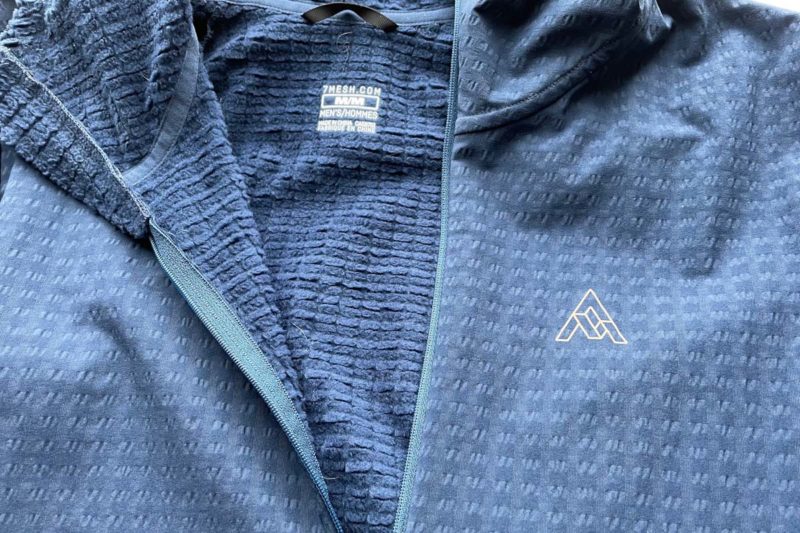
First off, WTV stands for “Wind Thermal Ventilation.” 7mesh took a lofty grid-style inner fabric and mated it to a woven, wind-blocking face material to create a thermal pullover that traps body heat in, but only to a point. The face fabric does allow some air permeability, and when you get really warm, the perforated lines in the grid fabric help hot air and moisture escape.
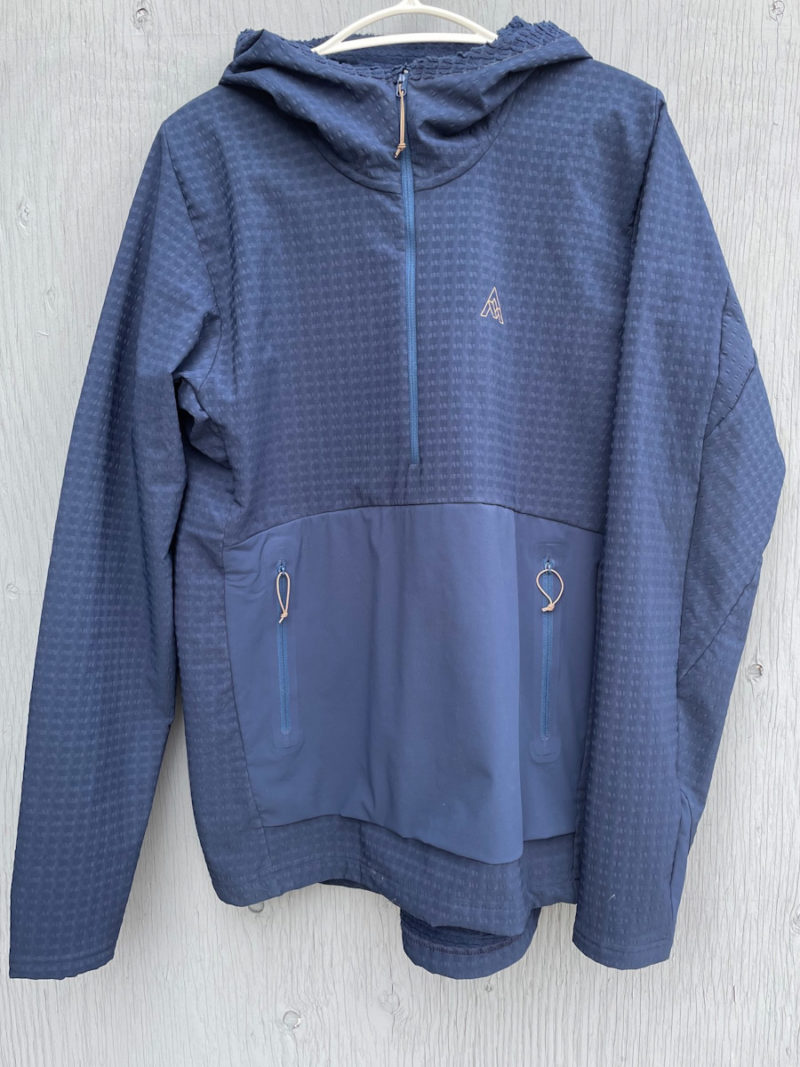
The Chilco Anorak is a quarter-zip pullover with a large kangaroo pocket on the front. All three zippers employ lightweight string pulls that are easy to grab with gloved hands. The Anorak features a structured hood with an elasticated edge, which can be squeezed over a helmet. The waist hem includes a nearly hidden drawstring, and the 7mesh logos on the front and back are reflective. The Chilco is a fairly lightweight garment (especially for how warm it is) with a medium listed at 370 g.
The WTV Chilco Anorak retails for $200. Color options are Black, Honey, or Midnight Blue, and men’s sizes range from XS-XXL. Women’s models are also available.
Ride Impressions
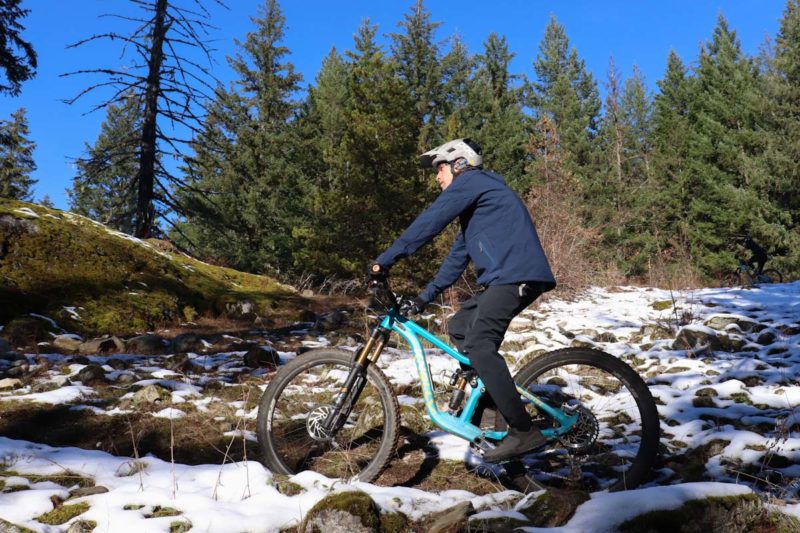
My first fall ride in the WTV Chilco Anorak was a gravel ride in temperatures ranging from about 8-11° Celsius. I wore a long-sleeve jersey underneath the Chilco, and it was a good choice. I was comfortably warm right out of the car, and after a little pedaling, my body easily stayed warm throughout the whole ride. I did wind up getting a bit warmer than necessary, but never got sweaty or too hot. Right away, I noticed the WTV fabric blocking the chilly wind quite well.
My next ride was a bit cooler and wetter, at about 6-9° in mist and light rain. I wore my POC Guardian Air shell over the anorak (and a long-sleeve jersey). Even with its hood, the Anorak fit well underneath the POC shell. Again I got a bit warmer than needed but did not overheat or get sweaty inside. Usually, I’d lament a lack of armpit vents on a thermal layer, but the WTV fabric does a great job of regulating temperature and the Chilco Anorak performs very well without them.
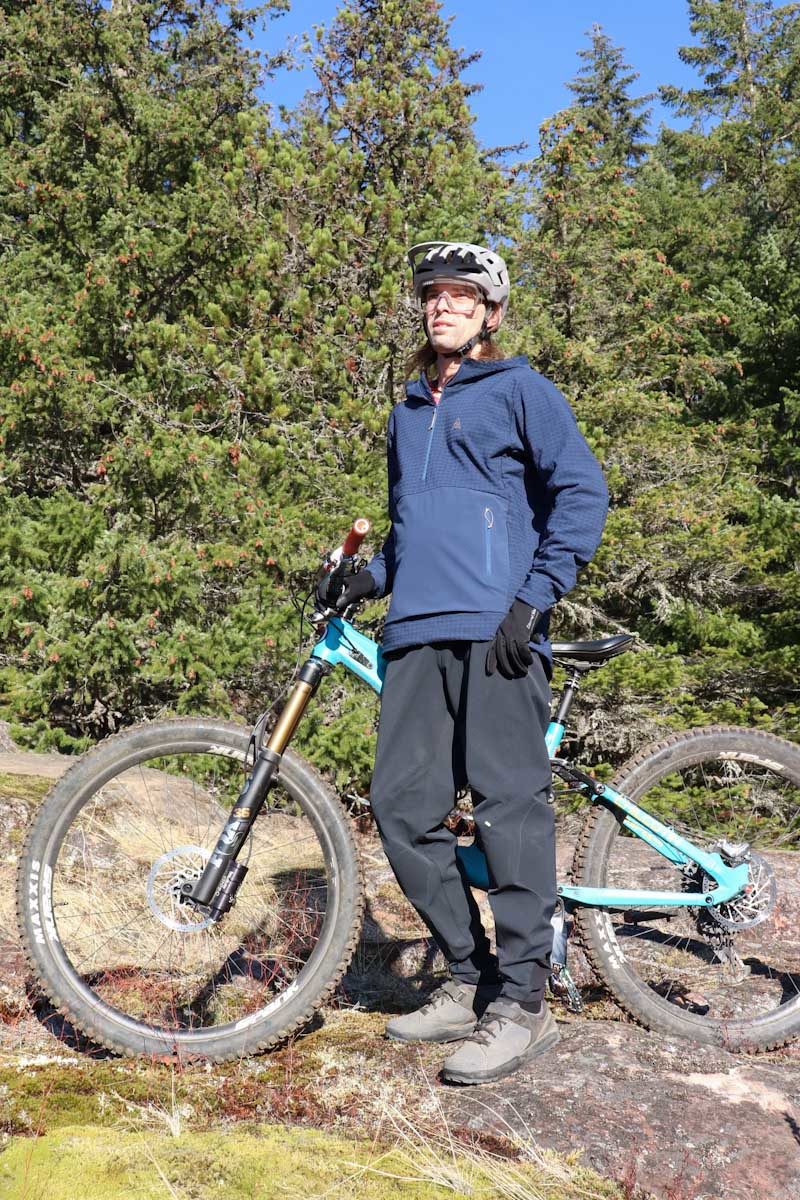
As temperatures dropped, I got out for a 5° C MTB ride. I started with my POC shell but only wore it to the trailhead. I knew I’d warm up quickly while climbing, and continuing with the Chilco Anorak and a long-sleeve jersey proved perfect. For MTB laps, I’d say the Anorak’s ideal temperature range (with a jersey underneath) is roughly 3-10° C (37-50º F): With an outer shell, that range could be pushed into freezing temps easily. While descending I was reminded of how well the WTV blocks wind and how well it traps body heat (despite me never using the waist hem’s drawstring).
One thing the Chilco Anorak is not intended for is rainy rides. The WTV fabric does not have any kind of water-resistant coating or treatment. The fabric is designed to dry quickly, so it can handle a lot of humidity but the Chilco is not advertised as a water-resistant or waterproof layer.
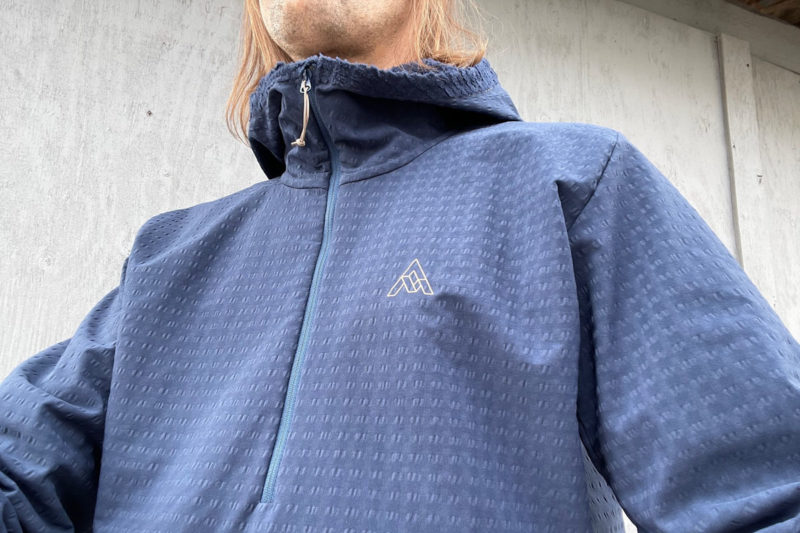
I found the fit of the Chilco Anorak nearly perfect. 7mesh carefully tailors its clothing and this thermal offers a reasonably lean cut without restricting motion in any way, whether you’re on flat bars or drop bars. The only slightly odd thing about the fit of the WTV Anorak is how it wants to sit on my shoulders. When I put it on, I always have to pull it forward to get the shoulders to sit nicely on my body, or the front rests right up against my upper chest. Once I tug it into place, it is perfectly comfortable and the shoulders/collar don’t try to migrate backward while I ride.
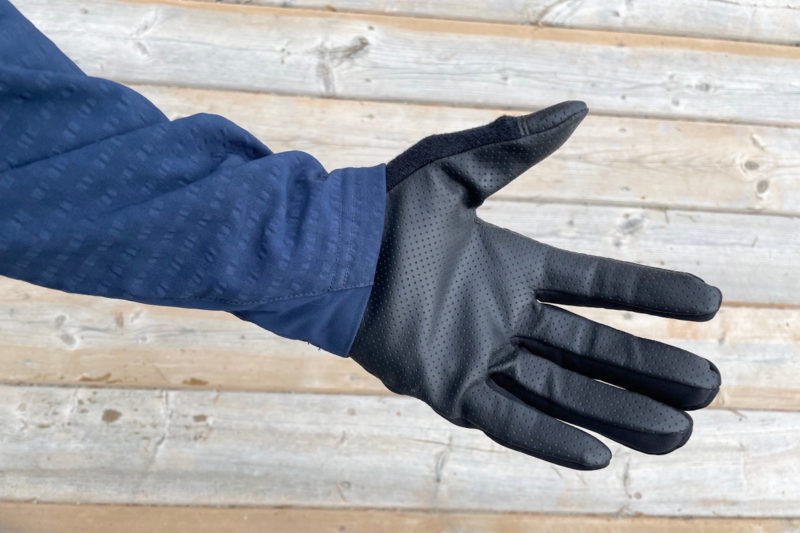
The Anorak’s arm length is bang-on for me, and I love the simple hems with the small stretch panels — the cuffs are clean and lean and do a good job of staying put over gloves. The Chilco’s body offers good coverage, with its dropped tail reaching right to my saddle. I also like how the collar is tall enough to tuck your chin inside on those chilly starts.
I never rode the WTV Chilco Anorak without a base layer, but I did wear it around the house against my bare skin. The inner grid fabric is soft and comfortable, so riding with the Anorak alone or dropping your base layer to cool down are definitely reasonable options.
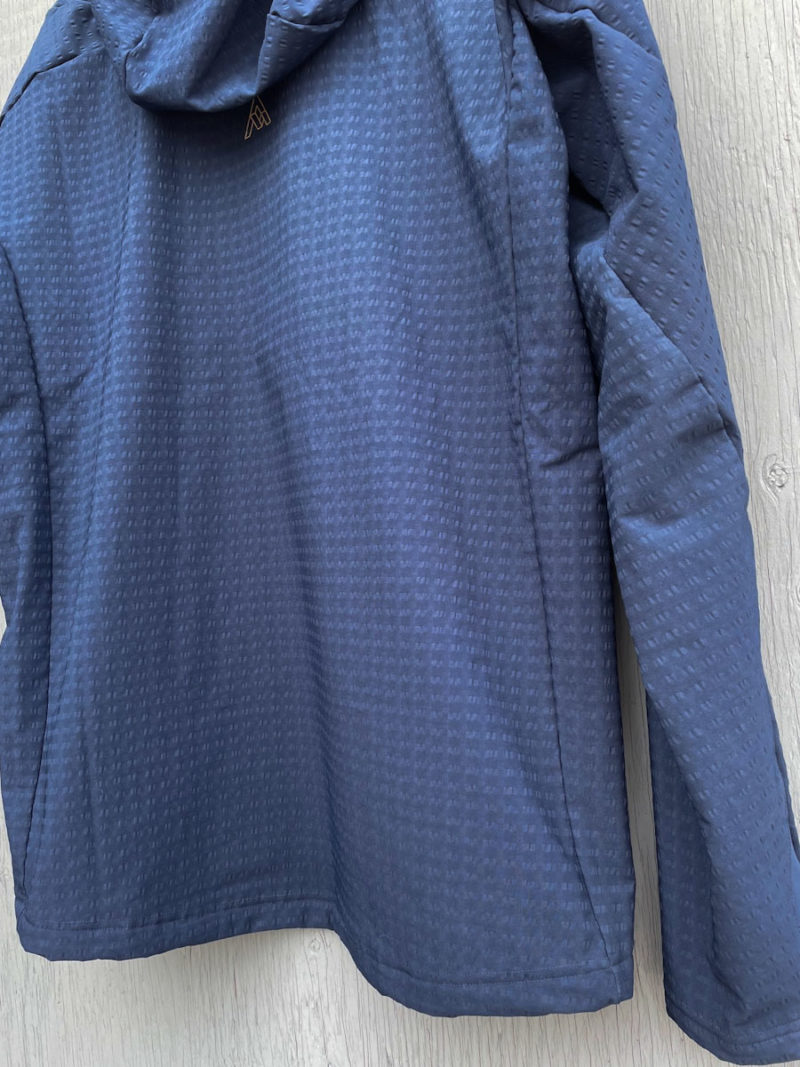
Since last fall I’ve worn the Anorak quite a few times, often with outer layers or a backpack, and there is no visible wear and tear to speak of. The WTV fabric is proving to be impressively durable.
While the Chilco Anorak is fully intended for riding, I wear it as a casual garment more often than most of my riding clothes. It’s good-looking, warm, and cozy! I appreciate the bang-for-your-buck factor of garments that ride great but that you’ll likely wear casually too.
Lizard Skins Monitor 3 SZN Gloves: Construction

Lizard Skins’ Monitor 3 SZN Gloves feature a one-piece palm with a perforated pattern for maximum grip. Furthermore, the palm material is hydro-resistant so it’ll remain grippy when wet. On the backside, Lizard Skins offers a thin fleece-lined Thermal Flex back panel to provide warmth.
The Monitor 3 SZN Gloves also include elastic cuffs with a water-resistant nano lining and microfiber nose-wipe panels on both thumbs. MSRP is $39.99, and sizes XS-XXL are available in Jet Black only.
Ride Impressions
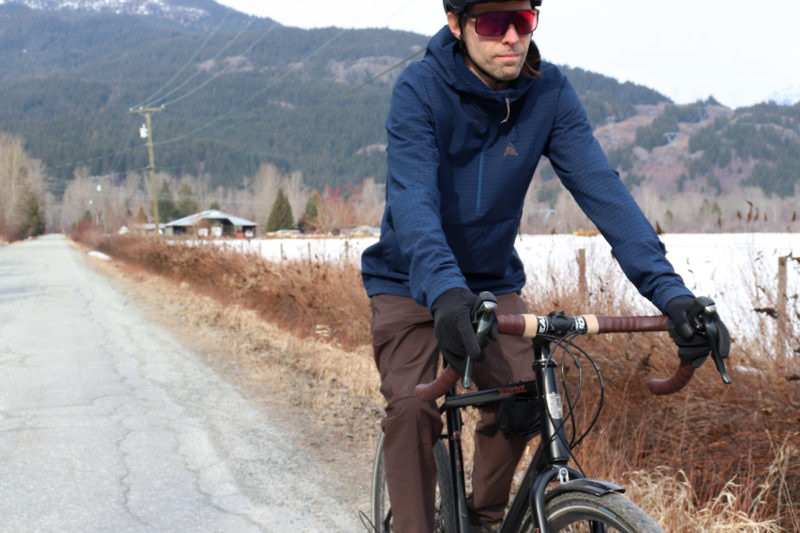
The Monitor 3 SZN Glove proved to be a good option for chilly rides, and I found them ideal within the range of roughly 4-10°(39-50º F). The gloves aren’t super warm right off the bat; at temperatures around 5° or lower, I did have a few cool starts with them but once I warmed up, they held heat in well for the remainder of my ride. I rode these gloves down to about 2° C (35º F), and my hands started off chilly but got comfortable after a while.
After several gravel rides and a few MTB laps, I’d say these gloves might be better for MTB at near-freezing temps. While the gloves feel fairly windproof, the wind seems to get through them a bit as my hands always took longer to warm up on my gravel-bike road rides versus my MTB laps. My trail network starts with a climb, and with some hard pedaling, it doesn’t take long to warm up enough for the gloves to trap in your body heat. I enjoyed a fall MTB ride at 5° and the Monitor 3 SZN Gloves were perfect for it.
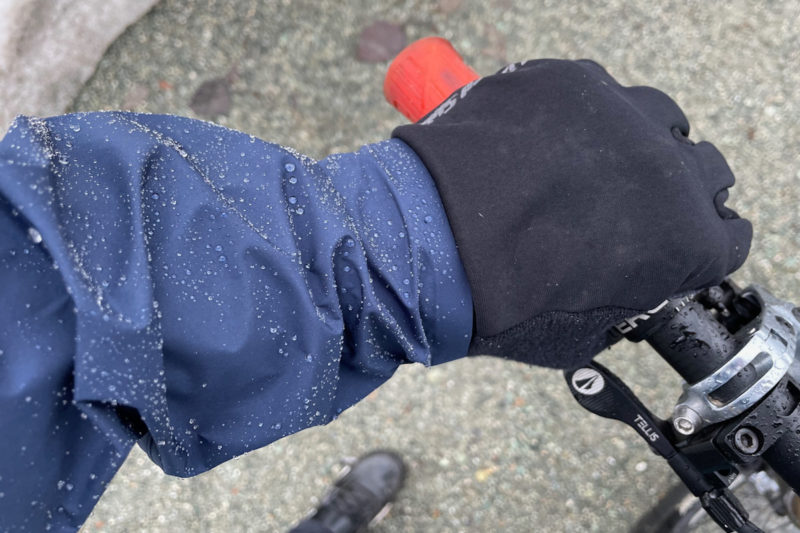
While I never got out in heavy rainfall I got to ride the gloves in light rain for over an hour, and they handled it easily with my hands staying completely dry inside. The soft cuffs are long enough to ensure the wind doesn’t get up your sleeves, and the lack of closure straps makes them easy to slip into a jacket.
The Monitor 3 SZN Gloves aren’t amazingly thin but I had no issues with dexterity, bunching, or discomfort on either drop bars or MTB bars. I’m also pleased that they’re proving quite durable — I found one tiny cut on one palm but otherwise, there’s no notable wear and tear on the gloves.

